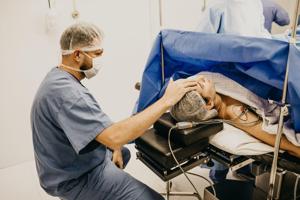Introduction
In the complex world of healthcare, the phrase "to err is human" rings particularly true. Medical errors can happen in any healthcare setting, and while they often provoke fear and anxiety among medical professionals, they should not be stigmatized or swept under the rug. Instead, creating safe spaces for discussing medical errors is essential for fostering a culture of transparency, learning, and ultimately improving patient safety. This article delves into the importance of these safe spaces, the challenges faced in establishing them, and actionable strategies to promote open dialogue about medical errors.
Creating Safe Spaces for Discussing Medical Errors
Creating safe spaces for discussing medical errors involves establishing environments where healthcare professionals feel secure in admitting mistakes without fear of retribution. In such settings, individuals can share their experiences openly and collaboratively seek solutions that enhance clinical practice. The objective is to shift the narrative surrounding medical errors from one of blame to one of improvement and education.
The Importance of Open Communication in Healthcare
Why is open communication vital in healthcare? For starters, it helps identify systemic issues that may lead to errors. When team members communicate freely about their mistakes or near-misses, it becomes easier to detect patterns—thus empowering organizations to put preventive measures in place.
Fostering a Culture of Trust
Establishing trust within a healthcare organization is paramount. Trust encourages staff members to voice concerns without fearing negative consequences or judgment. Organizations can foster trust through leadership commitment to transparency and accountability.
Learning from Mistakes Rather than Punishing Them
Instead of viewing errors as failures, they should be perceived as opportunities for learning. This shift in mindset allows teams to evaluate incidents constructively and develop protocols that minimize future risks.
Understanding Medical Errors: A Closer Look
Types of Medical Errors
Medical errors can occur at various stages of patient care:
Diagnostic Errors: Incorrect or delayed diagnoses. Medication Errors: Mistakes in prescribing or administering medications. Surgical Errors: Mistakes made during surgical procedures. Communication Failures: Miscommunication between healthcare providers or with patients.Statistics on Medical Errors
According to studies by the World Health Organization (WHO) and other reputable organizations:

- Approximately 10% of patients experience a medication error during their treatment. It’s estimated that around 400,000 deaths occur each year due to preventable hospital errors in the U.S.
These numbers emphasize the necessity for creating safe environments where healthcare professionals can discuss these issues candidly.
Barriers to Discussing Medical Errors
Even with a clear understanding of the need for open dialogue about medical errors, several barriers persist:
Fear of Repercussions
Healthcare professionals often fear punitive actions from their employers when admitting mistakes. This fear can stifle communication and deter individuals from reporting incidents.
Cultural Factors
In some organizational cultures, discussing mistakes may be frowned upon or viewed as weakness—leading to a lack of openness among staff members.
Lack of Time
Busy schedules make it challenging for healthcare providers to engage in discussions about past incidents which could lead to improvements.

Strategies for Creating Safe Spaces for Discussing Medical Errors
Implementing Non-Punitive Reporting Systems
One way organizations can encourage reporting is by implementing non-punitive reporting systems which allow staff members to report incidents anonymously without fear of punishment.
Creating Forums for Discussion
Regularly scheduled meetings or forums dedicated to discussing medical errors help normalize these conversations within an organization.
http://medication-errors-resources-playbook.trexgame.net/when-should-you-file-a-medical-negligence-claimLeadership Commitment to Transparency
When leaders model transparency and admit their own mistakes, it sets a tone throughout the organization that promotes openness and learning.
Education and Training Programs
Conduct training sessions that emphasize error-reporting processes and educate staff on how constructive feedback can lead to improved patient care.
Engaging Healthcare Staff in Error Discussions
Empowering Staff through Peer Support Groups
Peer support groups provide a platform where team members can share experiences related to medical errors and gain insights from each other’s perspectives.
Using Technology as an Ally
Technology can facilitate discussions about medical errors through tools like secure messaging apps where staff can share experiences safely without facing immediate repercussions.
Case Studies on Successful Implementation
Case Study 1: A Hospital Implementing Safety WalkRounds
A prominent hospital introduced Safety WalkRounds involving leaders visiting different departments weekly. These visits encouraged staff members to discuss safety concerns openly—resulting in enhanced communication regarding medical errors.

Case Study 2: The Role of Simulation Exercises
Another institution integrated simulation exercises into their training programs where staff could practice responses during crisis scenarios without real-world consequences—encouraging openness about mistakes made during simulations.
The Role of Patient Safety Organizations (PSOs)
Patient Safety Organizations play a crucial role in creating safe spaces by collecting data on adverse events while promoting best practices across institutions focused on learning rather than punishment.
FAQ Section
1. What are medical errors?
Medical errors refer to preventable adverse effects resulting from inappropriate actions during patient care—including diagnostic inaccuracies and medication mishaps.
2. Why is it important to discuss medical errors?
Discussing medical errors fosters an environment conducive to learning from past mistakes while enhancing overall patient safety efforts within healthcare organizations.
3. How do I create a safe space for discussing medical errors?
Implement non-punitive reporting systems, hold regular discussion forums, encourage leadership transparency, and provide ongoing education on effective communication skills regarding error reporting.
4. What barriers exist when discussing medical errors?
Common barriers include fear of repercussions, cultural factors within an organization that discourage openness about mistakes, and time constraints affecting busy schedules.
5. Who benefits from discussing medical errors?
Both healthcare providers benefit by improving practices through collective learning while patients receive safer care as organizations implement changes based on shared experiences reducing potential risks associated with adverse events occurring again due lack previous awareness those same issues existed before hand!
6. What impact do peer support groups have?
Peer support groups empower staff members by providing emotional support while fostering open discussions surrounding shared experiences related directly/indirectly towards addressing issues found amongst colleagues working together day-to-day basis!
Conclusion
Creating safe spaces for discussing medical errors is not only beneficial—it’s essential for advancing patient safety initiatives within any healthcare system! By cultivating an environment characterized by trustworthiness & collaboration among all stakeholders involved—from frontline workers up through management levels—we pave way towards better quality outcomes based off lessons learned derived together! As we strive towards minimizing risks associated with avoidable incidents occurring again down road ahead let us remember: every conversation matters; every story told holds value when aiming improvement process continuously underway!!
With this comprehensive guide on "Creating Safe Spaces for Discussing Medical Errors", we hope you feel empowered & equipped take action necessary create positive change your own workplace!